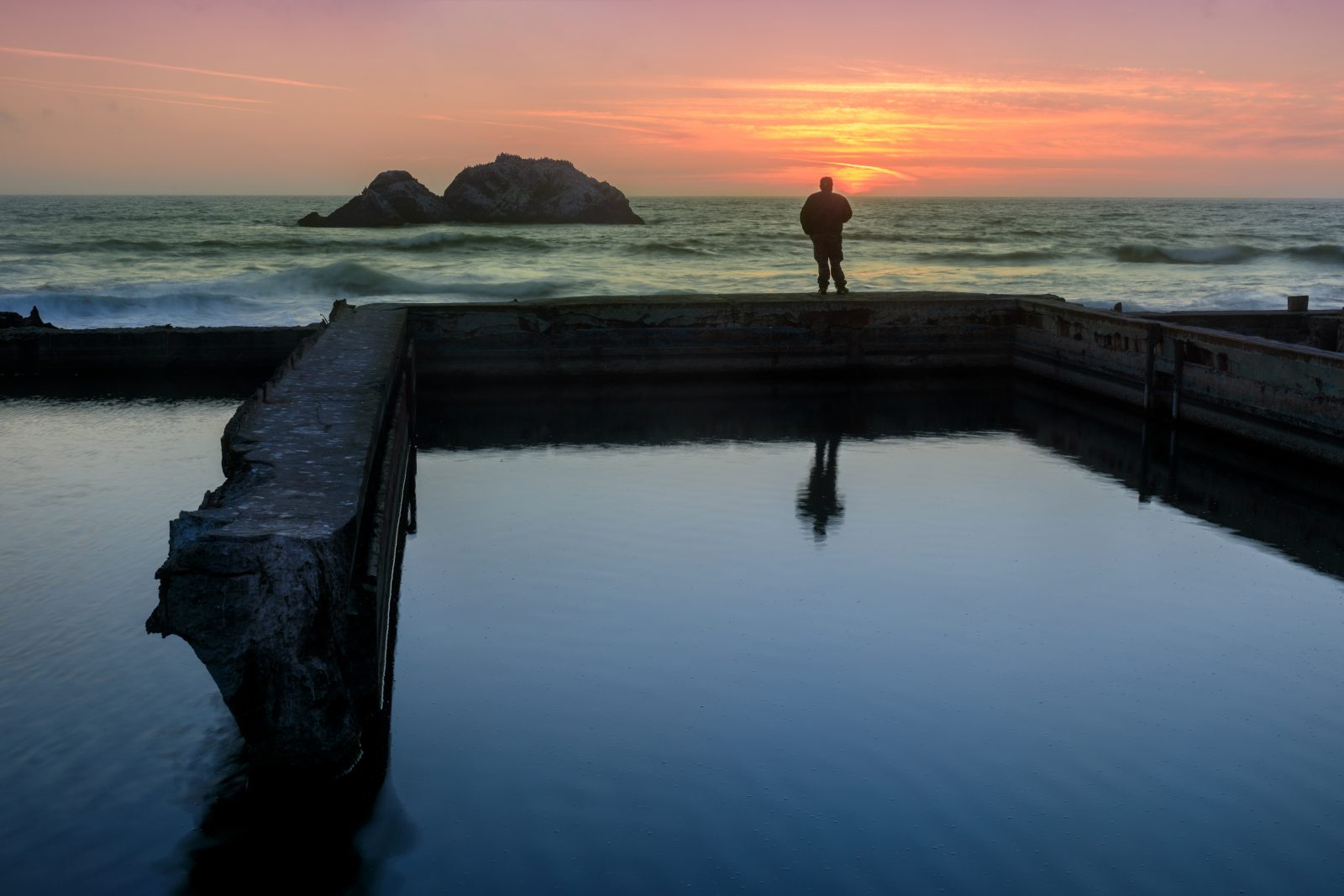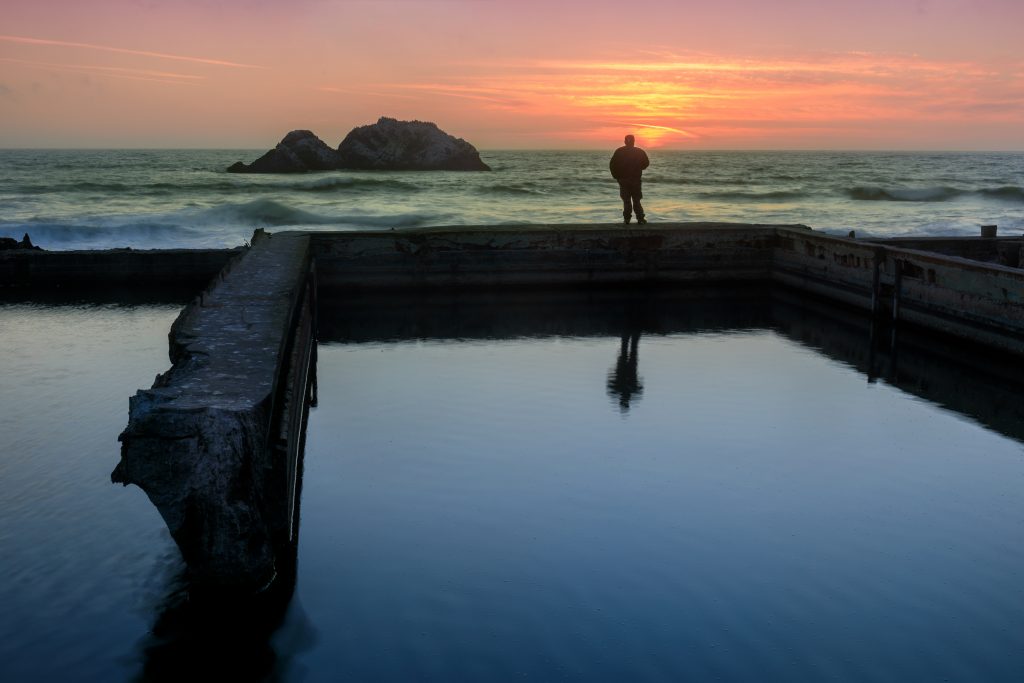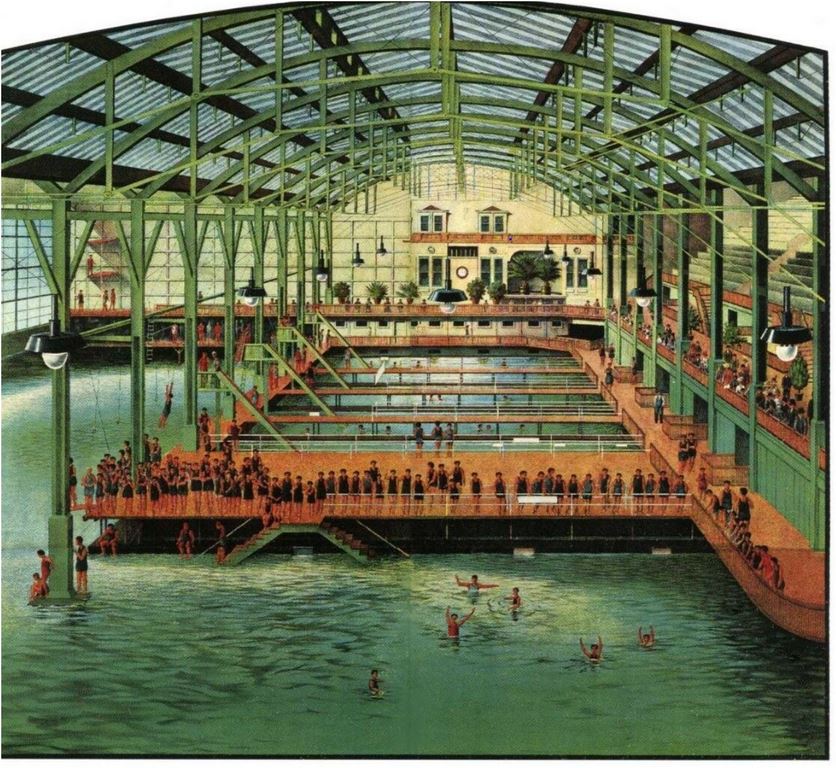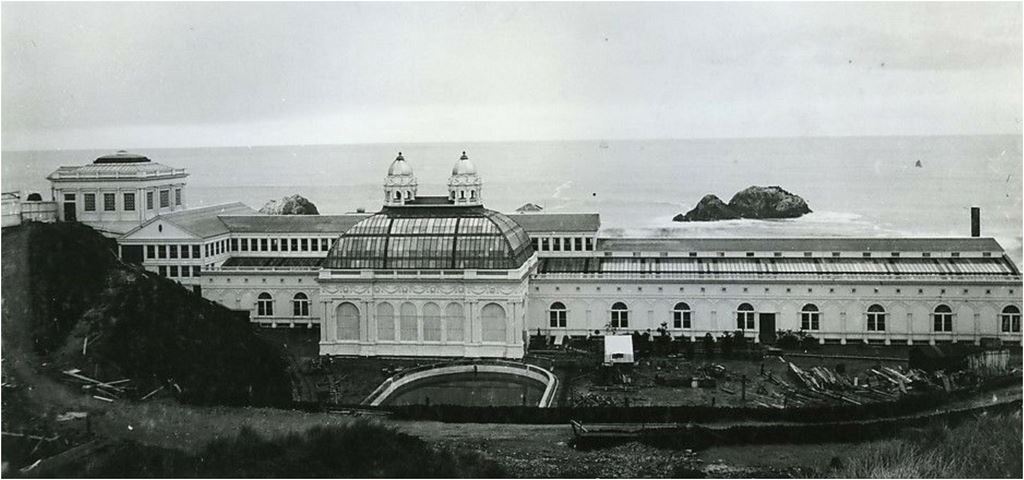Echoes of Innovation


At the turn of the 20th Century, San Francisco’s Sutro Baths was the world’s largest indoor aquatic facility. Although now in ruins, the baths are still a popular spot for visitors looking for a glimpse of the city’s storied past and a classic example of watershaping innovation.
By Eric Herman
Overlooking the mighty Pacific on the western edge of San Francisco, you can find the ruins of a massive indoor public-pool facility once known as the Sutro Baths.
Opened in 1896, the baths were at the time the largest indoor pool facility in the world. The iconic facility contained seven pools, one freshwater and six filled with seawater, all maintained at varying temperatures. In all, the Sutro Baths contained approximately two-million gallons.
According to Eugenia Kellogg Holmes in her book “Adolph Sutro: A Brief Story of a Brilliant Life” the baths were meant to “. . . rival in magnitude, utility and beauty, the famous abluvion resorts of Titus, Caracalla, Nero or Diocletian.”
In addition to the pools, the facility contained “Five hundred dressing rooms … spacious elevators and broad staircases . . . pavilions, balustrades, promenades, alcoves and corridors adorned with tropical plants, fountains, flowers, pictures, … the collected treasure of foreign travels… a portico with four Ionic columns and pilasters which lead to a noble staircase, wide, gradual of ascent, bordered with broad-leaved palms, the flowering pomegranate, fragrant magnolias … [touching] the very rim of the reveling waves.”
AQUATIC HISTORY
Adolph Sutro was a self-made millionaire, civic leader, designer and in many ways, a visionary. He designed the exclusive neighborhood, Sutro Heights and later developed the Sutro Baths in 1894, along with the locally famous Cliff House, just to the south of the baths.
With his special interest in natural history and marine studies, Sutro first constructed an ocean pool aquarium among the rocks north the Cliffhouse, which today lives on as a restaurant with a million-dollar ocean view.

Sutro soon expanded the property, designing and building the massive public bathhouse. It was an unprecedented innovation, foretelling future large-scale, multi-use indoor aquatic facilities.
It covered three acres and featured numerous engineering and artistic details.
Sutro’s basic concept was to provide a healthy, recreational and inexpensive swimming facility for thousands of local residents.
The design featured both modernist and neo-classic design, featuring Greek portal, which opened to a massive glass natatorium and included slides, trapezes, springboards and a high dive.
Hidden from view, Sutro designed a series of concrete tunnels and tanks that used the force of the tides to fill the pools. During high tide, the ocean could fill the 1.7 million gallons of water in just one hour. The Baths accommodated 10,000 people at one time and offered 20,000 bathing suits and 40,000 towels for rent. It was truly luxury the city’s burgeoning middleclass could afford.
In addition to what was then an entirely unique bathing experience, Sutro also designed the Baths to provide visitors with educational features, including an entryway with natural history exhibits. Throughout the massive facility, visitors could find galleries of sculptures, paintings, tapestries and artifacts from Mexico, China, Asia, and the Middle East, including always-popular Egyptian mummies.
In addition, Sutro offered his visitors a range of other attractions including concerts, talent shows, and restaurants. Altogether, he created an set of experiences that stimulated the mind and invigorated the body.

The baths were located at a railway hub that provided easy access from anywhere in the city. It quickly became a massively popular destination, a truly modern experience during the peak of the Industrial Revolution and the turn of the 20th Century.
END OF AN ERA
For all their glamour and excitement, the Baths were not commercially successful over the long-term. Adolph Sutro died in 1898 and for many years, his family continued to manage his properties.
Overtime, the Baths became less popular, due largely to the Great Depression, reduction in available public transportation and new public health codes. In an attempt to revive business, the owners converted the baths into an ice-skating rink, but the site never regained its past popularity and the ice-skating revenue was not enough to sustain the facility.
In 1964, developers made plans to replace the Baths with high-rise apartments. They bought the site and began demolition of the once great structure. In 1966, a fire destroyed what was left of the Baths and the city eventually abandoned the high-rise apartment plans.
The concrete ruins just north of the Cliff House are all that remains of the Sutro Baths and have been part of the Golden Gate National Recreation Area since 1973. The Baths are now a rough collection of pools of salt water, crumbling walls and rusting pieces of iron. The setting at the end of the Land’s End cliffs, looking out over Seal Rock and the ocean, is gorgeous and worth a visit.
Opening image by Yhelfman | Shutterstock. Vintage images from circa. 1900 postcards | public domain.









